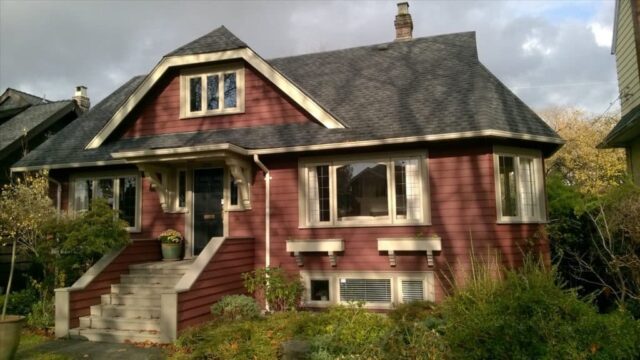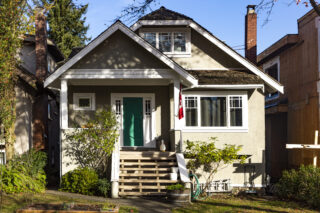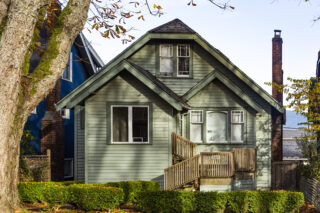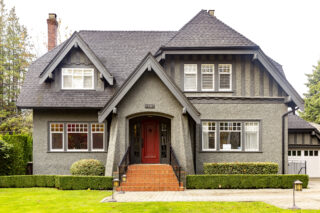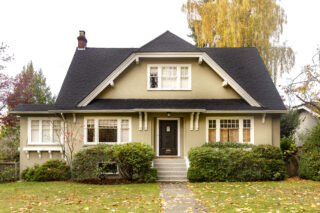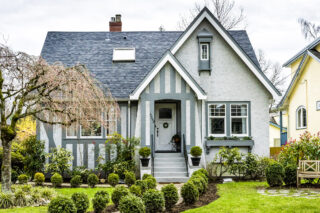Interwar Arts and Crafts buildings may have stucco or lap siding, while roofs are often asphalt shingles. Some have decorative half-timbering or stone detailing but for the most part they have minimal ornamentation. May have casement or double-hung windows, sometimes with sections in leaded glass.
Form
Modest variants on the grander houses before WWI, Interwar Arts and Crafts mostly feature jerkinhead roofs and often on a side gable. They may have a projecting bay (also with a jerkinhead roof) facing the street, half-timbering, and windows often set in threes. They tend to be smaller than the pre-war Arts and Crafts homes.
Background
Interwar Arts and Crafts is a more modest variation of the early Arts and Crafts style homes and appeared between 1920 and 1940. The style is distinguished by the presence of a jerkinhead roof. Although based on the same ideals of craftsmanship and quality that characterized its predecessor, the Interwar Arts and Crafts style is simpler and smaller. In some cases, Interwar Arts and Crafts homes have more in common with storybook cottage styles than the grand pre-war Arts and Crafts mansions.
Details
- Jerkinhead roof
- Side-gabled roof
- 1 ½ to 2 stories
- Projecting bay facing the street
- Windows usually set in groups of three
- Door may be off-centre
- May have decorative brackets
